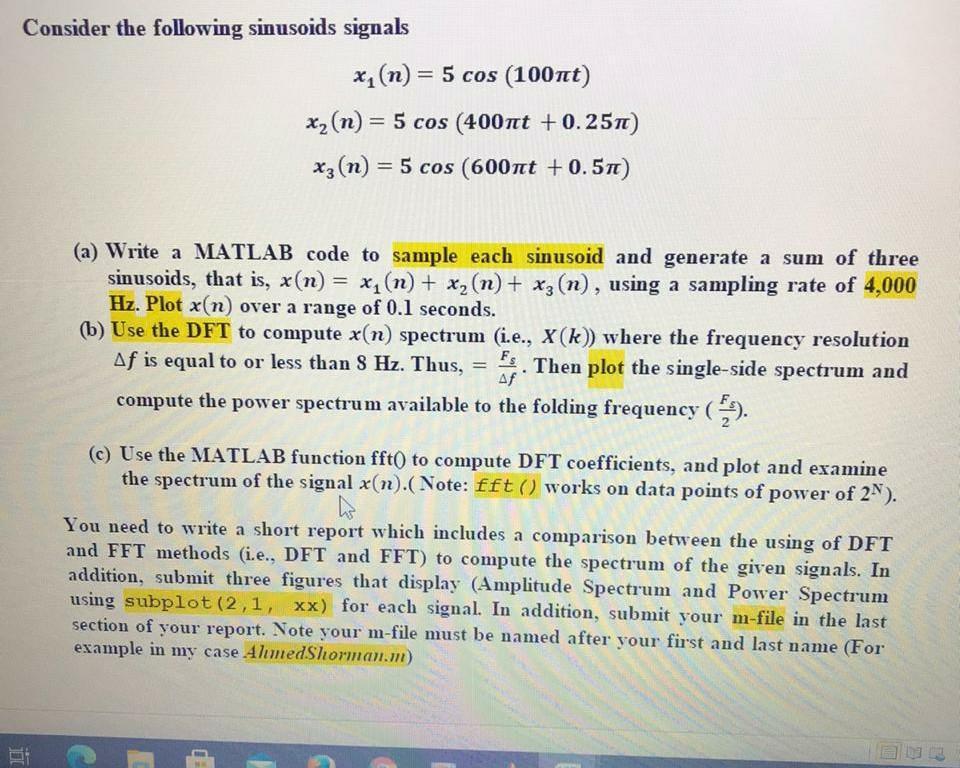Answered step by step
Verified Expert Solution
Question
1 Approved Answer
Consider the following sinusoids signals i x (n) = 5 cos (100nt) x (n) = 5 cos (400nt +0.25n) x3 (n) = 5 cos

Consider the following sinusoids signals i x (n) = 5 cos (100nt) x (n) = 5 cos (400nt +0.25n) x3 (n) = 5 cos (600nt +0.5n) (a) Write a MATLAB code to sample each sinusoid and generate a sum of three sinusoids, that is, x(n) x (n) + x (n) + x3 (n), using a sampling rate of 4,000 Hz. Plot x(n) over a range of 0.1 seconds. (b) Use the DFT to compute x(n) spectrum (i.e., X(k)) where the frequency resolution Af is equal to or less than 8 Hz. Thus, = Fs. Then plot the single-side spectrum and Af compute the power spectrum available to the folding frequency (). = (c) Use the MATLAB function fft() to compute DFT coefficients, and plot and examine the spectrum of the signal x(n).(Note: fft () works on data points of power of 2N). You need to write a short report which includes a comparison between the using of DFT and FFT methods (i.e., DFT and FFT) to compute the spectrum of the given signals. In addition, submit three figures that display (Amplitude Spectrum and Power Spectrum using subplot (2,1, xx) for each signal. In addition, submit your m-file in the last section of your report. Note your m-file must be named after your first and last name (For example in my case AhmedShorman.m)
Step by Step Solution
There are 3 Steps involved in it
Step: 1

Get Instant Access to Expert-Tailored Solutions
See step-by-step solutions with expert insights and AI powered tools for academic success
Step: 2

Step: 3

Ace Your Homework with AI
Get the answers you need in no time with our AI-driven, step-by-step assistance
Get Started


